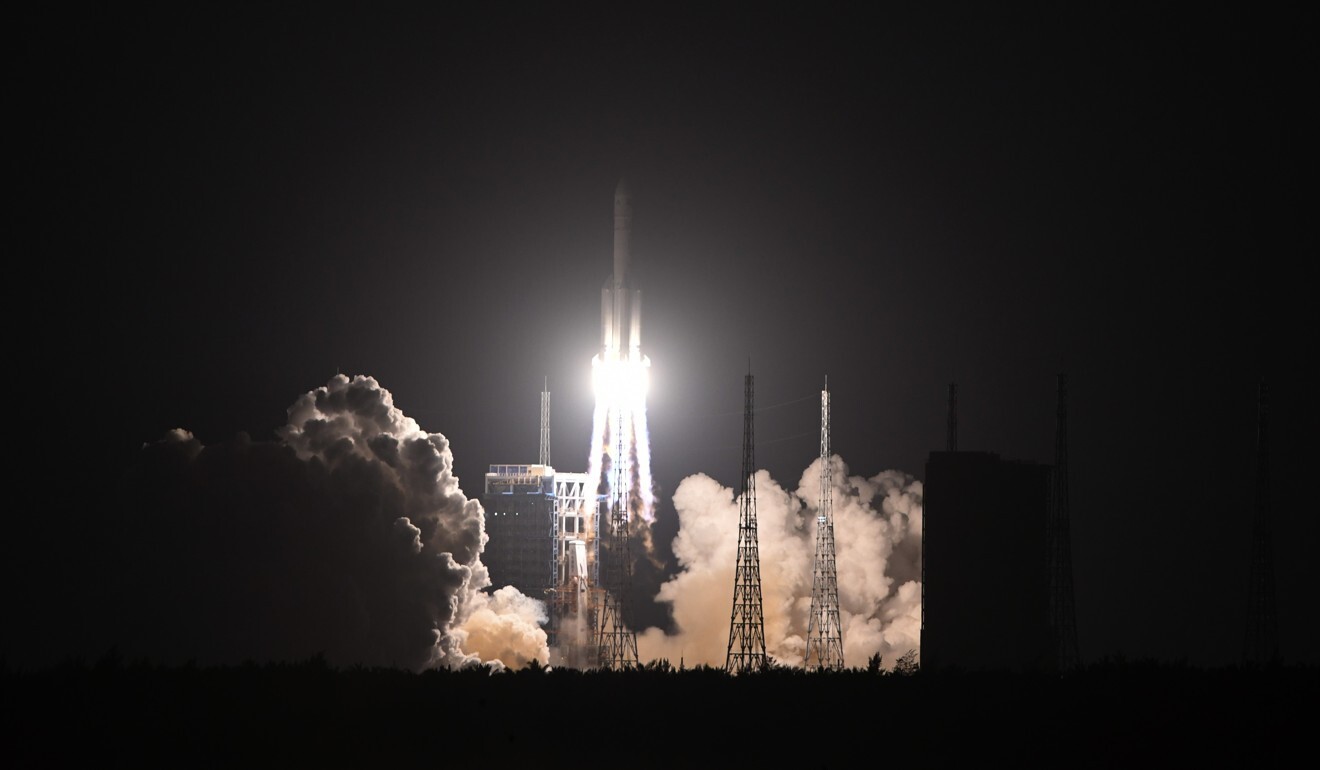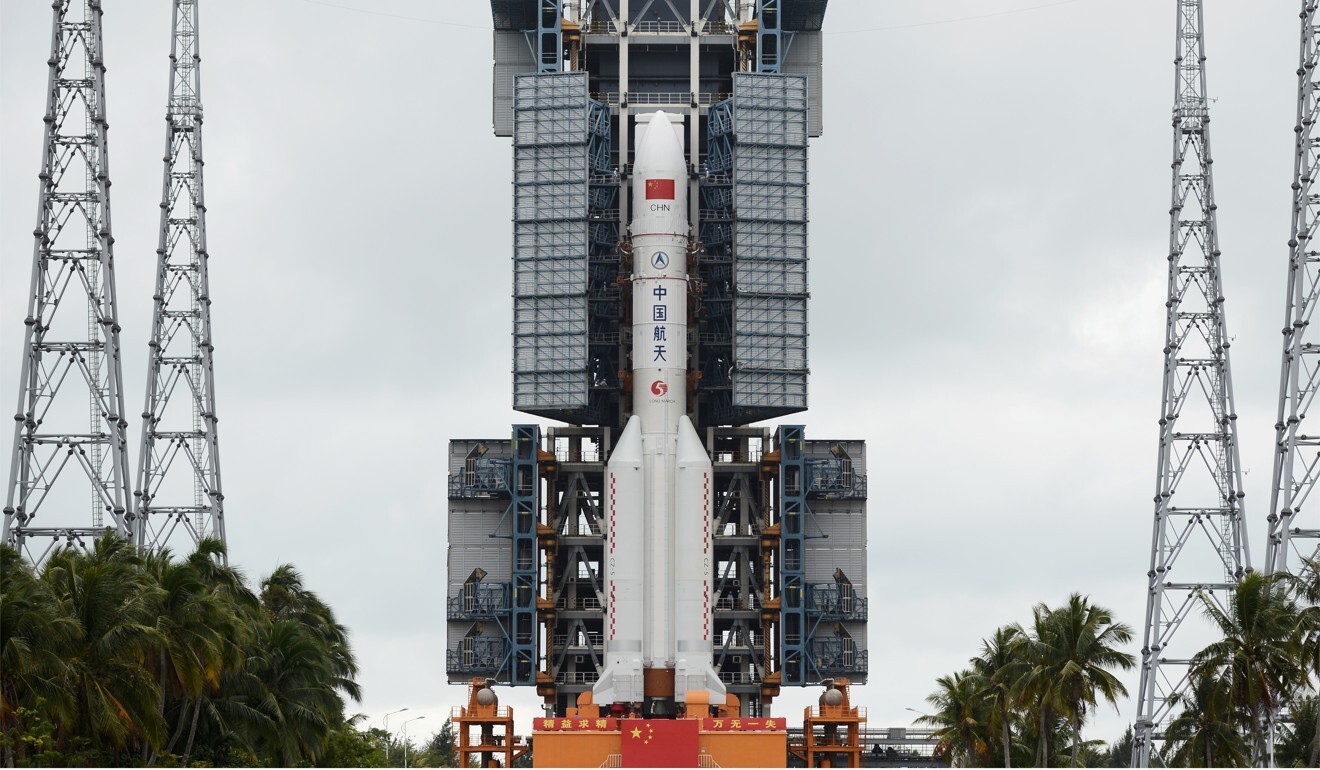
China’s space programme gets back on track with successful Long March 5 rocket launch
- CZ-5 mission declared a success after Shijian-20 satellite carrying ‘new era’ communications equipment entered its designated orbit on Friday evening
- Commander said team had ‘solved the problems’ that had led to two previous setbacks
China successfully launched its heavy-lift Long March 5 rocket on Friday evening, in a key step forward in its ambitious space programme after a series of setbacks.
Also known as the CZ-5, the rocket blasted off from a launch pad at the Wenchang centre in Hainan province with more than 1,000 tonnes of thrust at 8.45pm.
The Chinese space authorities declared the mission a “complete success” just over half an hour after lift-off when the Shijian-20 satellite it carried entered its designated orbit.
“After more than two years’ effort … the research and development team has overcome challenges in engine technology. [We] solved the problem,” Wang Yu, chief commander of the launch mission, told China News Service.
The launch will help to ensure that important technology to be used in subsequent missions works properly, including the Long March 5’s systems.
“The new satellite will bring China’s communication technology to a new era,” said Zhou Zhicheng, chief commander of the Dongfanghong-5 satellite platform.
It was China’s 34th and final space launch of the year, more than any other country, including the United States, which carried out 27.

The Shijian-20, built using the new Dongfanghong-5 platform, will be one of the largest satellites operating at geosynchronous orbit 36,000km (22,369 miles) above China and surrounding areas.
Its solar panel reaches over 40 metres (131 feet) when extended – longer than the wingspan of a Boeing 737, according to the China Aerospace Science and Technology Corporation.
The satellite is expected to take China’s space communication frequency to 5 gigahertz and data transfer speed to 1 terabyte per second. It is also the first Chinese satellite to use a high-powered ion-thrust engine designed to improve its manoeuvrability and service time.

It also carries quantum encryption equipment to enable ultra-secure communication for military and government users, according to space authorities.
“This satellite’s mission will change China’s position from a follower to a leader in space communication,” said a Beijing-based space expert who declined to be named due to the sensitivity of the technology.

Friday’s launch was seen as a critical mission for the rocket team after previous failures.
On its maiden mission in November 2016, the rocket failed to reach the speed required for the early phase of the flight, though it managed to lift its satellite cargo into orbit, allowing China to declare the trip a success.
But months later, during a second attempt in July 2017, a turbo pump that injected fuel into the combustion chamber malfunctioned and the main engine died minutes after take-off.
The rocket plunged into the sea. The CZ-5 was pulled out of service for more than two years for an investigation, problem solving and extensive testing. Other Chinese space projects were also affected, including a mission to bring samples from the moon back to Earth, building the nation’s first space station, landing a rover on Mars, and a telescope project.
The stakes were high for the third CZ-5 attempt, according to scientists who attended pre-launch briefings. “Although there has long been talk of playing down politics in the space programme to reduce the pressure on the researchers, the pressure of this launch is very high,” one of the scientists said. “There is simply no room for failure.”
Russia offers rocket engine tech as China’s Long March 5 struggles to get off the ground
China’s presence in space remains far behind that of the United States – there are about three times more American satellites in orbit than Chinese. And China’s space programme budget is about a tenth of Nasa’s, according to one Chinese physicist’s estimate.
However, despite the successful launch, Chinese space experts said there was still a long way to go – estimating the country needed 10 to 15 years to catch up with the US in space.

